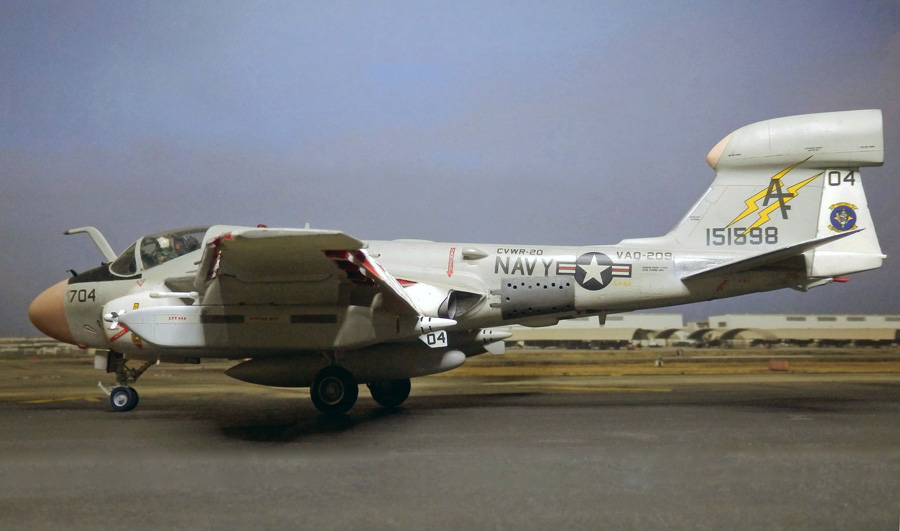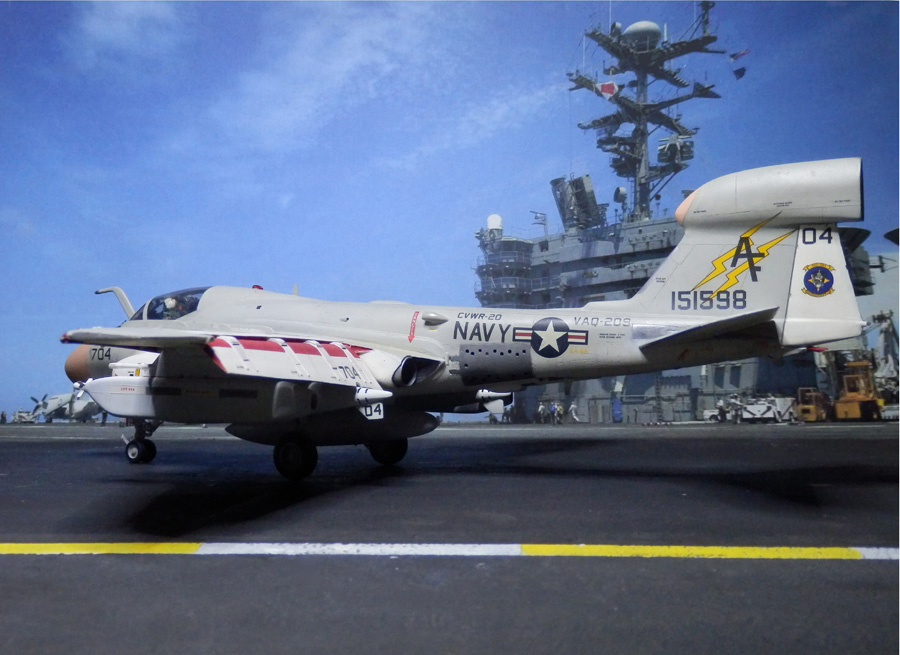|
||
|
|
|
The Original:
The EA-6A was, as can be seen from the prefix "E", a variant of the all-weather bomber A-6A for the suppression/interference of enemy radar signals ("electronic counter measures"). A streamlined container on the fin accommodated the Bunker-Ramo AN/ALQ-86 system, the AN/APN-153 navigation radar was placed in the nose radome (due to less space required, the nose radome could be kept shorter with the same external shape). An AN/APQ fire control radar for AGM-45 "Shrike" rockets was available, but in practice the EA-6A did not use the "Shrike", which was connected to a radar signal. The existing machines were distributed between US Navy and Marne Corps, main operational use was at Vietnam.
Only 28 were built. 11 from rebuilt A-6A, 15 new, first flight on 26.04.1963.
In the middle of 1970 it was replaced by the EA-6B Prowler in front service,
but continued to do service in reserve and training units until 1993 the last
one was taken out of service.
Modelling:
The pictures are new, the model isn't. Almost 30 years have passed since its construction. Since this type is almost forgotten nowadays and also the kit will be available only on a model exchange, the question is why I am coming with it today. It's quite simple: When I rearranged something, the list of what had to be done to make this model fell into my hands. There was no A-6A at that time, only the EA-6A "Electric Intruder", Monogram-typical with accurate outer contour and raised panel lines. - Usable if one did not set too large requirements. But if the model should look less "model-like" and more realistic, a lot was needed. Etched and resin parts were not so "in" at that time.
At the beginning there was the question how the Intruder should look like. As
the decals for the VAQ-209 were for an aircraft in aircraft carrier use, there
were two options: Either in parking position with folded wings (that's the way
it is) or unfolded in flying position with crew is sitting inside. As a result
for me the latter.
What was necessary in detail can be taken from said (translated)
list for an exhibition.
|
"VAQ 209 Intruder returning from carrier duty " (markings soon to be removed).
 |
